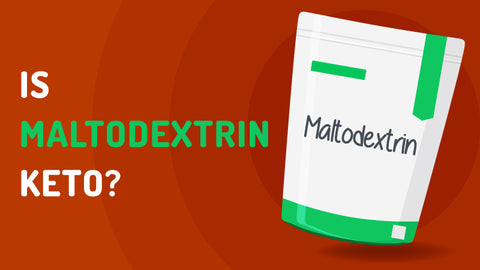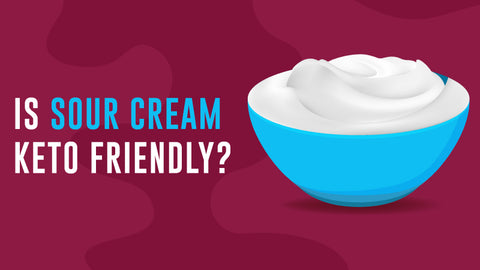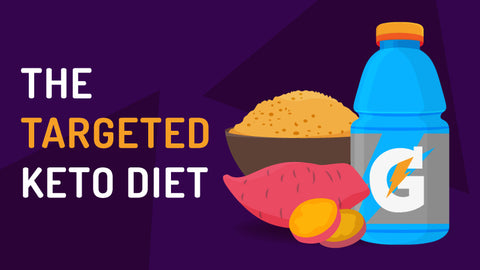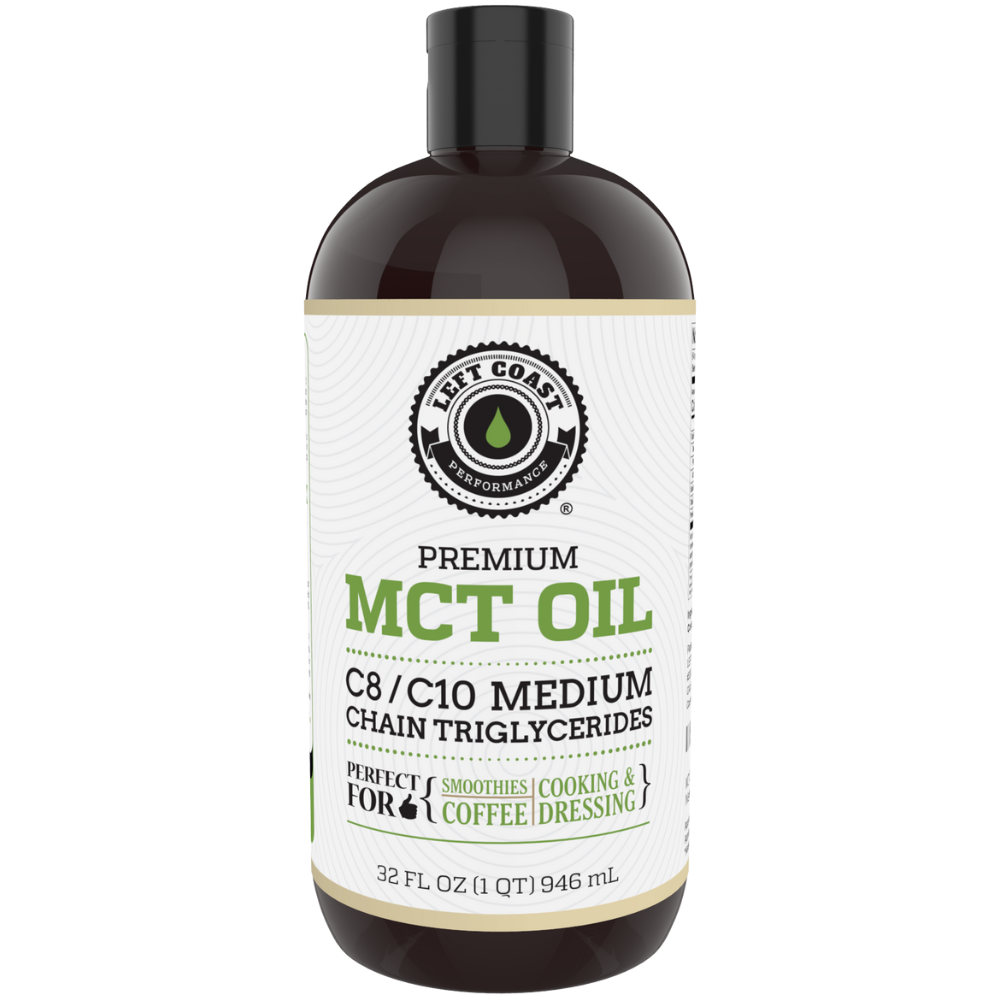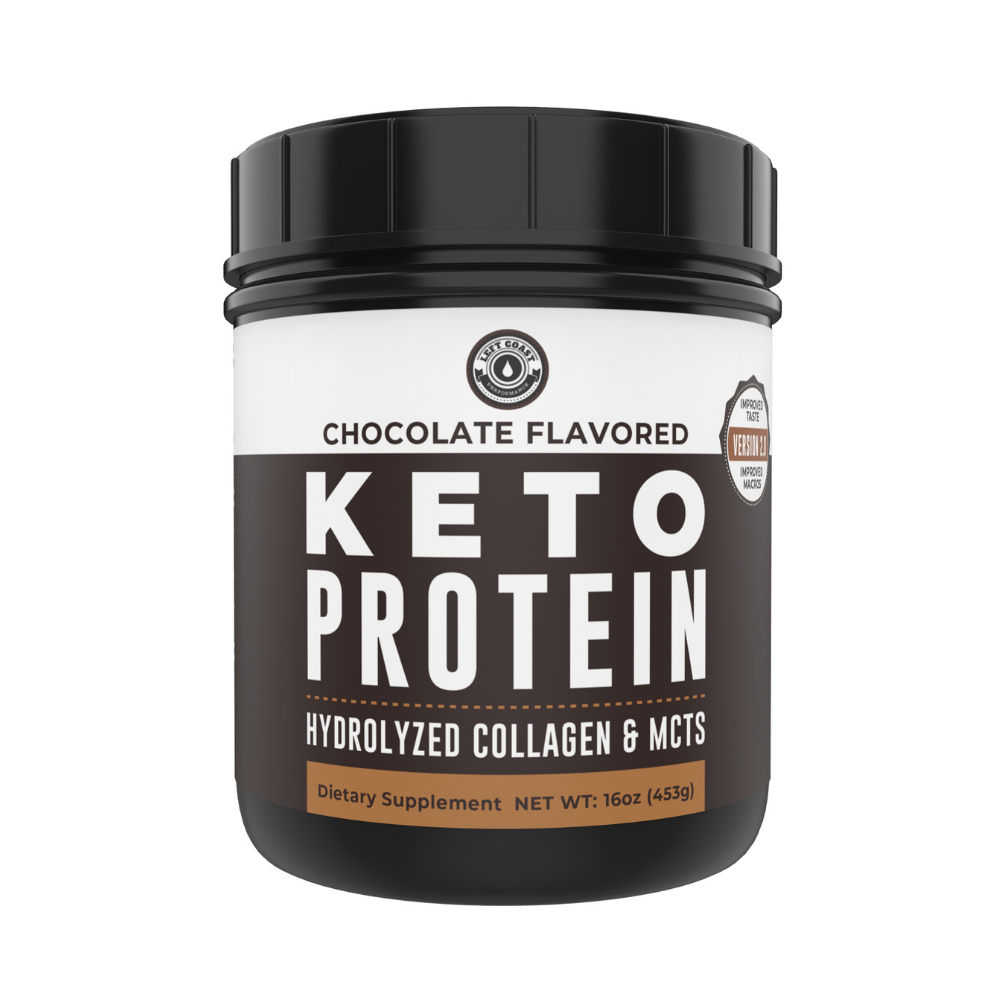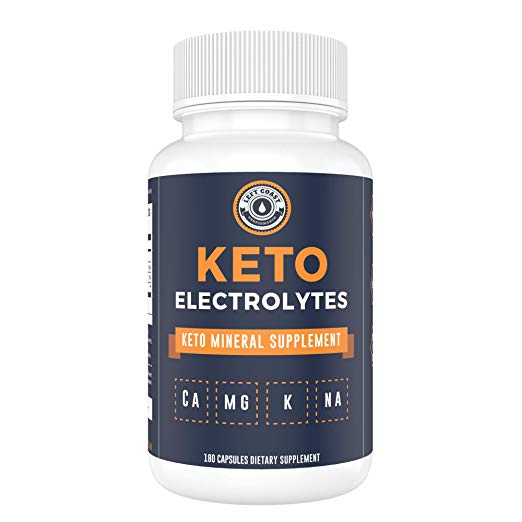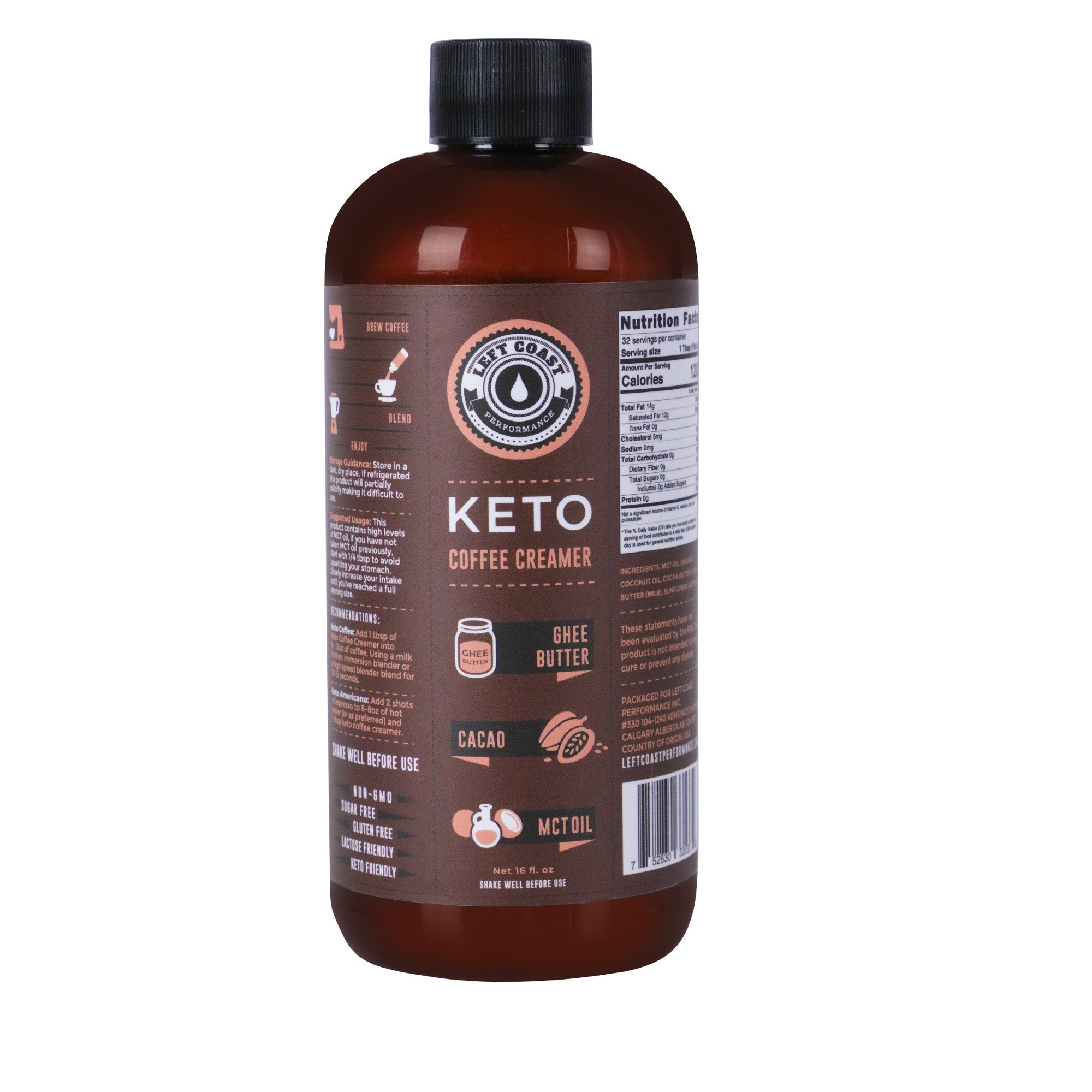Keto Egg Fast Guide: What It Is, Why Consider Trying It, Rules, Recipes and a Meal Plan
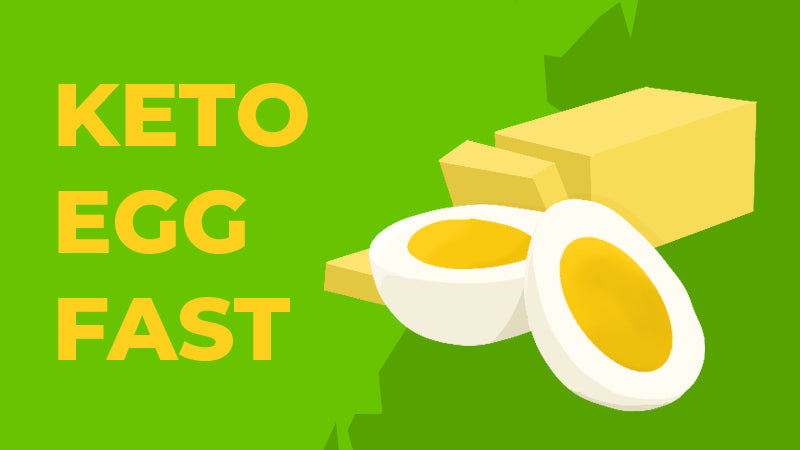
on November 15, 2019
Many people start on the keto diet for weight loss. In the first few weeks, you may experience rapid results as the pounds melt away. Eventually, you hit a wall. The scale won’t budge no matter how hard you try.
If you’re stuck in a weight loss plateau and looking for a way to kickstart your progress, an egg fast may be your solution.
With just three simple ingredients — eggs, cheese, and healthy fats — you can help rewire your body to use fat as your fuel source instead of carbs. Over a short period of time (3 - 5 days), this fast can help you get into the state of ketosis if you’re not already. Or, you’ll stay steady on course to restart weight loss.
In this post, you’ll discover everything you need to know about a keto egg fast including:
- Health benefits
- Success guidelines
- Possible risks
- Egg fast meal plans
- Egg fast recipes
What Is a Keto Egg Fast?
A keto egg fast is a short-term (3-5 days) restrictive diet that focuses heavily on a diet of eggs and healthy fats.
The strategy is to jolt your body into a fat-burning mode (ketosis) to stimulate fat loss after a weight loss plateau, where you're experiencing little to no change in your progress.
A keto plateau is a common occurrence for people on a ketogenic diet. It's likely to happen soon after the initial period of rapid water weight loss. But, a keto plateau could occur at anytime you slip out of ketosis when you unintentionally consume too many carbs.
An egg fast is different from a low carb, egg diet.
The egg fast is highly restrictive, and it has three headlining ingredients: eggs, cheese, and healthy fat (like butter, MCT oil, coconut oil, olive oil, lard, or tallow).
Notice that there is no carbohydrate component in the keto egg fast. After your body depletes the energy from your glycogen stores, your body must rely on fats (ketones) for energy.
It's not always the smoothest transition for your body to make, but there are ways to mitigate negative side-effects.
How To Remedy And Best Avoid The Keto-Flu On An Egg Fast
When you drastically eliminate your carbohydrate intake in favor of increased fats and protein, you may experience uncomfortable side-effects.
The collection of side-effects, including fatigue, dizziness, nausea, and vomiting, are dubbed the keto-flu. It's usually experienced within the first 24 - 48 hours.
There are several reasons why you're experiencing keto-flu symptoms, including withdrawals from sugar cravings, dehydration, electrolyte imbalances, and hormone changes.
The best ways to avoid keto-flu or, at the very least, mitigate the symptoms is to:
- Increase your water intake
- Supplement vitamins and electrolytes
- Decrease the intensity of physical activity
Why Eggs on a Keto Fast?
This discussion is based on chicken eggs, but other eggs, such as duck or quail eggs, would work just as well for a keto egg fast. In many ways, eggs are the perfect keto food because they have zero carbs.
If you’ve been on keto for a while, eggs may be your go-to snack food. They’re easy to prepare, there are many ways to cook an egg, and some egg meals are even travel-friendly —not to mention inexpensive.
While egg fasting, eating six or more per day is the norm.
Here’s the nutritional profile for one large egg:
|
Food |
Calories |
Fat (g) |
Protein (g) |
Carb (g) |
|
Lg. egg |
70 |
5 |
6 |
0 |
You’ll notice that there’s a little more protein than fat in an egg.
You’re probably wondering, "if a ketogenic diet is based on an 80% fat intake, how can eggs be such a great keto food?"
This is where increasing your healthy fats and protein (in the form of cheese) comes into play.
Contrary to many sources on the internet that claim there’s no scientific basis for a keto egg fast, there are a couple of reasons related to human metabolism and nutrition that support a keto egg fast or a modified keto egg fast as described below.
Choline in Eggs
Humans require choline for many functions, especially proper fat metabolism and transfer, as well as the formation of neurotransmitters.
The egg yolk is a primary dietary source of choline. Although humans are capable of producing some choline, the majority comes from food.
A choline deficiency may lead to a build-up of fats in the liver, creating a condition known as non-alcoholic fatty liver disease (NAFLD).
The recommended daily requirement of choline for women is 425 mg of choline. For men, it’s 550 mg.
Americans are generally deficient in choline. A national survey in 2007 revealed the average intake of choline was 260 mg/day for women and 396 mg/day for men. The Framingham Heart Study showed it was <206 mg/day.
However, due to a gene variation, 40% of women are believed to have the same daily requirement for choline as men.
One large egg contains 147 mg of choline. The tolerable upper limit for humans is 3,500 mg/day before undesirable side effects (low blood pressure and fishy body odor) begin — On a keto egg fast, you’d need to consume about two dozen eggs a day for that to happen.
In terms of lipid (fat) transport, choline is essential for making fat-based bile salts.
In the small intestine, the bile salts reduce larger fats into smaller globules. Digestive enzymes can more easily break down the smaller fat globules.
The bile salts also help the large intestines reabsorb fat droplets.
In ketosis, you depend on fat breakdown for energy; therefore, adequate choline is essential. A keto egg fast will keep you well-stocked in choline.
Methionine in Eggs
Methionine is an essential amino acid, which means we must consume it in our diet. Amino acids are the building blocks of protein.
Humans need about 4.5 mg of methionine per pound of body weight every day. For example, someone weighing 150 lbs requires 675 mg/day.
Eggs and cheese contain methionine but in varying amounts. Egg whites contain twice as much as egg yolks.
Research with human subjects shows that methionine restriction (MR) in the diet helps the body make a faster transition from glucose to fat burning for energy production. This is precisely the goal of a ketogenic diet.
MR also raises adiponectin levels. Adiponectin is a protein hormone — known as a fat-burning hormone — because it’s associated with higher fat metabolism and more weight loss.
It appears that a keto egg fast would be more successful with methionine restriction.
Practically speaking, consuming more egg yolks and avoiding some or all of the egg whites would help get you into ketosis faster, over the keto plateau, and on to more significant weight loss results.
No research shows that an MR egg fast would work better. Nor is there any research that shows it wouldn’t.
If you’ve tried a traditional keto egg fast using whole eggs without much success, trying a methionine restricted egg fast with mostly egg yolks may get you into ketosis quicker, so you can begin to melt the pounds away.
Demystifying Cholesterol in Eggs
For years, researchers thought that dietary cholesterol was responsible for high blood cholesterol levels, which in turn led to cardiovascular disease (CVD).
This is not true.
The United States government nutritional guidelines currently do not limit the amount of dietary cholesterol you can have.
The cholesterol that your body makes is also not responsible for CVD.
The current understanding among mainstream medical researchers is that inflammation starts the disease process. Cholesterol comes in to repair the damage caused by sources of inflammation like sugar.
"Good and Bad Cholesterol" High-Density Lipoprotein (HDL) and Low-Density Lipoprotein (LDL)
These are not types of cholesterol.
HDL and LDL are types of molecules composed of part lipid and part protein. For this reason, they are called lipoproteins.
Lipoproteins — not cholesterol — come in several varieties. But you hear mostly about high density (HDL) and low density (LDL) lipoproteins.
Lipoproteins transport cholesterol to inflamed sites to repair damage
HDL has two roles. First, it's anti-inflammatory, meaning its presence is associated with decreased risk for heart disease.
Second, HDL directs reverse cholesterol transport (RCT) by returning excess cholesterol circulating in the body back to the liver. From there, it's eventually secreted into the bile and removed from the body.
LDLs are associated with inflammation leading to heart disease. Low-density lipoproteins are smaller than HDLs. Being much smaller, they easily penetrate artery walls where they cause damage.
We also know that high-carb diets raise triglycerides. High-carb diets also reduce the size of LDLs and decrease the amount of HDLs.
This means that when you're on a high-carb, low-fat diet, you have an increased likelihood of inflammation-related health conditions, including obesity, type 2 diabetes, and CVD.
A low-carb, high-fat diet has the opposite effects. It can reduce inflammation that causes these chronic diseases.
The take-home message?
Don't worry about too much cholesterol on a keto egg fast.
There's no limit on the number of eggs you may consume in one day. The average, depending on your daily caloric needs, is 6 - 12 eggs per day.
Why Saturated Fat, Monounsaturated Fat, and Medium Chain Triglycerides on a Keto Egg Fast?
Fat is the ultimate food on any form of the ketogenic diet. So, it’s logical that fat would have an important role to play on a keto egg fast.
On a keto egg fast, it’s recommended that you consume one tablespoon of fat for each egg you eat.
Here’s a table that provides the nutritional profiles for several types of fat that you may wish to include in your keto egg fast.
|
Food (Tbsp.) |
Calories |
Total Fat (g) |
Protein (g) |
Carb (g) |
|
Butter |
102 |
12 |
0 |
0 |
|
Olive oil |
119 |
14 |
0 |
0 |
|
Coconut Oil |
117 |
14 |
0 |
0 |
|
MCT Oil |
115 |
14 |
0 |
0 |
|
Lard |
115 |
13 |
0 |
0 |
|
Tallow |
115 |
13 |
0 |
0 |
*Values are approximate
Note: Cottage cheese — a favorite among many dieters — is not recommended for a keto egg fast. It’s relatively low in fat but high in protein and carbs.
Keto Egg Fast Rules
The best way to set yourself up for success on your egg fast is by making a diet plan and tracking your results.
Before you design a diet plan, let's lay out some of the ground rules.
There are many rule variations for egg fasting, depending on your source of information. In general, they all possess the following principles.
- Eat only whole eggs, fats, and full-fat cheese.
- Eat one tablespoon of fat for each egg consumed.
- Have up to 4 ounces of full-fat, unprocessed dairy cheese.
- Avoid diet soda. Drink only water, coffee, or tea (no sugar or cream - except for keto creamer).
- Strive to maintain at least a 70% fat: 27% protein: 3% carb ratio to stay in the state of ketosis.
If you're confident you're in ketosis at the start, a three-day egg fast may be sufficient to see some weight loss.
If you're not sure if you're in ketosis, or if you're experiencing a keto plateau with no weight loss, plan for a 5-day keto egg fast. You need 2 - 3 days to exhaust all of your body's glycogen before you fully transition to a fat-burning mode of energy production.
To avoid uncomfortable side-effects, make sure you're getting enough electrolytes at all times. A multivitamin (with no added sugar) is advised to be sure you're receiving all micronutrients.
Many sources of information on the keto egg fast recommend eating an egg within an hour of waking up. This may be a good rule of thumb for many people. But, there is no scientific basis for this.
If your goal is to get off a keto plateau quickly to kickstart weight loss, you may combine a keto egg fast with 18:6 intermittent fasting.
Try to maintain your recommended daily caloric intake when doing a keto egg fast.
An appointment with a nutritionist may be necessary at the start of a keto diet to ensure you've got the calorie number right for you.
If you're unsure about how to calculate your macro ratios, a macros app will help. We recommend Carb Manager and MyFitnessPal, but do your research before you settle on an app that's right for you — then, for consistency's sake, stick with it.
Which Eggs Are the Best for a Keto Egg Fast?
Shop for locally produced, pasteurized eggs from free-range hens.
A 2010 study showed that eggs from free-range chickens are more nutritious than eggs from caged chickens fed a commercial corn-based diet.
Eggs from pastured animals have twice as much vitamin E and long-chain omega-3 fatty acids compared to eggs from conventionally raised birds. These eggs also have more than twice the total amount of omega-3 fatty acids.
When comparing the ratios of omega-6 and omega-3 fatty acids, the pastured eggs have less than half the omega-6 to omega-3 fatty acid ratio than conventional eggs.
This is another reason for choosing pastured eggs over conventional eggs.
The ketogenic diet, and, by extension, a keto egg fast, is very low in omega-6 fatty acids.
But if you eat eggs from chickens fed a corn-based diet (conventional) high in omega-6, you’ll be consuming the omega-6s as well.
If you’re considering the keto egg fast, invest in high-quality eggs from chickens raised on a farm you can trust.
Community-supported agriculture groups (CSA) are an excellent place to start.
Keto Egg Fast Tip: The most nutritious eggs will be those laid in the spring and summer when insects are most plentiful. Consequently, the best time of year to do a keto egg fast is in the spring or summer.
The next best option is USDA certified organic eggs. Note that these eggs come from chickens on a corn-based diet. They rarely — if ever — left a cageless barn. At least these eggs don’t have the pesticide residues that conventional eggs have.
Benefits of a Keto Egg Fast
There are several benefits of a keto egg fast. Many are similar to those you’d get from following a ketogenic diet in general, but a few are unique to it.
1. Lose body fat
2. Maintain muscle mass
4. Reduce inflammatory disease markers
5. With only three ingredients to work with, a keto egg fast puts the culinary imagination into high gear.
6. Since a keto egg fast relies entirely on whole, natural foods, it’s no trouble leaving the temptations of packaged keto snacks in the store.
7. Because it’s limited in scope and time, completing a keto egg fast — and feeling a sense of achievement — is realistic and manageable.
Risks of a Keto Egg Fast
Similar to the benefits of a keto egg fast, several risks stem from a ketogenic diet and others that are unique to it. Here a brief review of the risks.
| Risk | Solution |
| May be harmful to those with certain health conditions including diabetes, pancreatitis, fat metabolism disorders, and similar diseases | Consult with your healthcare provider before starting an egg fast |
| Micronutrient deficiencies may lead to health problems | A multivitamin (with no added sugar) and electrolytes may help avoid this. |
| Constipation | Consume more fat and less protein, increase gentle exercises (walking, yin yoga, cycling), and drink more water. |
| Loss of interest due to limited food choices may result in noncompliance | Experiment with egg recipes. (See the next section for ideas.) |
| The gut microbiome is deprived of the fiber it lives on when you’re on a keto egg fast since there’s no fiber in eggs, cheese, and fat. |
|
Sample Menu for a Keto Egg Fast
There are innumerable ways to prepare eggs to make mealtimes something you actually look forward to when you’re doing a keto egg fast. Here’s a partial list:
As an example of a 5-day keto egg fast, try the following meal plans. Be sure to have at least one glass of water with each meal as well as coffee or tea. Take any supplements along with your food.
On a side note, if you're practicing methionine restriction, you might want to reconsider some cheeses.
Cheeses have different amounts of methionine.
Here are the varieties with the highest amount of methionine (expressed at % RDI recommended daily intake).
If you wanted to try a methionine restricted keto egg fast, avoid these cheeses with the most methionine.
|
Cheese (oz.) |
Percent RDI |
|
Parmesan |
37 |
|
Romano |
33 |
|
Swiss |
30 |
|
Colby |
24 |
With that out of the way, let's get into the meal plans.
Note: The instructions for all of the recipes are below
Day 1
|
Breakfast |
|
|
Lunch |
|
|
Dinner |
|
Day 2
|
Breakfast |
|
|
Lunch |
|
|
Dinner |
|
Day 3
|
Breakfast |
|
|
Lunch |
|
|
Dinner |
|
Day 4
|
Breakfast |
|
|
Lunch |
|
|
Dinner |
|
Day 5
|
Breakfast |
|
|
Lunch |
|
|
Dinner |
|
Keto Egg Fast Recipes
The following recipes are to be used as general blueprints for meals. Allow your creativity to reign supreme!
Don't be afraid to personalize your keto fast. When you do, you'll be more inclined to try it again. Or, you may wish to incorporate some of the recipes you've perfected into your daily keto meal plans post-egg fast because they're just that tasty and make excellent meals for low carb diets.
Chaffle
A chaffle is a low-carb waffle with an egg and cheese base. You will need a waffle maker to get this recipe right. Cheddar cheese is popular for this recipe, but any shredded cheese will do.
Whisk the egg and cheese together and apply it to the buttered and pre-warmed waffle press.
Alternatively, add your cheese before adding the whisked egg, sandwiched by more cheese on top.
Cheese Crisps
In an oven, place small mounds of cheese (cheddar, mozzarella, asiago, and parmesan) on a pre-warmed baking sheet coated with butter.
Once melted, turn the crisps over. When they're crisp to your liking, remove from the oven and enjoy.
Egg Salad
Chop and mash three hard-boiled eggs, and stir in grated cheese or crumbled cheese crisps for texture.
You can add low carb condiments to spice up your salad like hot sauce, mustard, or a home-made mayo recipe (we recommend one below).
Egg Drop Soup
For each egg, heat 1 cup of bone broth and add one tablespoon butter.
Bring broth to boil. Beat eggs and add spices to taste. Stir the boiling broth in a circle and drizzle egg and continue to stir until egg rags appear.
Egg Noodles
Make a very thin omelet in either a large frying pan. Once done, fold it up on a cutting board then slice to your preferred 'noodle' thickness. Enjoy with grated cheese.
Deep-Fried Eggs
Heat lard or coconut oil until hot but not smoking (375 degrees). Crack eggs into a prep bowl and carefully slide one egg at a time into the middle of the fryer — be careful of hot oil splatter!
Gently corral the egg into a ball with a silicone spatula — Fry for 3-4 minutes before draining eggs onto a paper towel.
Egg Sandwich
Separate egg whites from two eggs. Whisk the whites until super-fluffy with stiff peaks. Place large spoonfuls of whisked egg whites on a buttered baking sheet into small mounds (like you'd do with cookie dough) and put in the oven until lightly brown.
Pan fry whole eggs or scramble the remaining egg yolks with whole eggs. When cooked, place your fried or scrambled eggs between the two egg white "buns" for a keto egg fast sandwich.
Egg Soufflé
With an electric hand mixer, whip egg whites until stiff peaks form. Spoon the mixture into buttered ramekins, folding more of the egg mixture into the ramekin slowly.
Place ramekins in a double boiler and steam it until the consistency is creamy and puffy.
Egg Croissant
This is a Japanese-style egg pancake with many thin layers, like a croissant. Whisk four eggs in a bowl. In a buttered frying pan, add just enough to cover the bottom. When browned, fold over.
Re-butter half of the pan and add enough whisked, raw egg to cover it. Brown again. Flip that on top of the first layer. Continue cooking thin layers and stacking.
Flavoring Your Egg With Spices
There’s a virtual treasure trove of egg fast recipes all on the Internet. Be aware, however, that some recipes may not strictly comply with the egg fast rules that you’re following.
One common area of concern to watch out for is the addition of “hidden carbs” that could jolt you out of ketosis. It can compromise your weight loss objectives for doing a keto egg fast in the first place.
Salt and pepper are acceptable to use on a keto egg fast. Other spices and herbs contribute a few carbs. So, go easy on them if you desire to liven up your egg fast diet.
Here’s a brief table showing the net carbs in 1 tbsp. of spices and herbs commonly used to add flavor to egg dishes. Values differ slightly for seasonings in leaf vs. ground form.
Fresh spices and herbs may have different carb counts, as well. If your favorite herb or spice is missing from our table, a quick search on the USDA Food Central database will yield answers.
|
Spice or Herb (1 tbsp.) |
Net Carbs (g) |
|
Basil, dried leaves |
0.21 |
|
Cayenne pepper |
1.56 |
|
Paprika |
1.30 |
|
Tarragon, dried leaves |
0.77 |
|
Thyme, dried leaves |
0.73 |
For creative cooks who want to go beyond the standard recipes with eggs and whip up their own za’atar, gremolada, sriracha, salsa verde or garam masala, the USDA Food Central database is your friend for finding net carb counts for all the components of these popular, international spice blends.
A Note On Mayonnaise
Whipping up your own mayo is the best way to know what’s in it. Traditionally, mayonnaise is made with just the egg yolks, but this may not be the case for all store brands.
This is especially important to know if you’re incorporating methionine restriction into your keto egg fast. In this case, when you wish to eliminate or reduce methionine-rich egg whites from your diet, be sure your store brand mayo is egg white-free. Also, most conventional store-bought mayonnaise has vegetable oils rich in omega-6s. Avoid these.
We’ve found a delicious mayo recipe that’s both keto friendly and paleo with only five ingredients by Wholesome Yum.
Transitioning Off Your Keto Egg Fast
At the end of the fast, give your body a day or two to readjust by substituting only one meal with something other than eggs, cheese, and fat. Be sure to include a serving of non-starchy vegetables for your gut microbiome.
The next day, keep one meal egg-cheese-fat only but integrate more of your favorite keto foods in the other two meals.
In all cases, take your transition off the keto egg fast slowly and monitor how your body is readjusting. If you experience digestive upset, ease off of whatever you think isn’t agreeing with you.
Then, try integrating the offending food at a later time.
On all days, do your best to keep track of your macros ratio so that you remain in ketosis and continue losing weight.
Wrap Up on the Keto Egg Fast
A keto egg fast may be the short-term solution you need to get off of a weight loss plateau or get you into ketosis quickly.
Only three foods — eggs, fat, and cheese — are permitted. While this is a highly restrictive diet, there is an unlimited number of ways to prepare eggs with a little creativity.
To set yourself up for success, it's best to meal plan and carefully monitor how your body reacts. You can adjust your diet as necessary with our tips on avoiding keto-flu and mitigating the risks involved with egg fasting.


